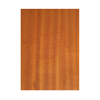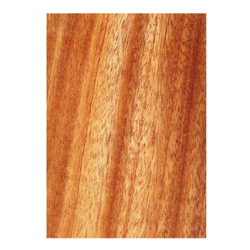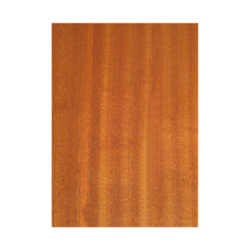African Mahogany

Family: Meliaceae - Order:
Sapindales - Class: Magnoliopsida
Scientific
name: Khaya (anthotheca, grandifoliola, ivorensis, madagascariensis and
senegalensis)
Trade name: Acajou / African Mahogany
Also known as Undianunu, Red mahogany, Acajou
d`Afrique and Caoba del Galon.
Origin: West tropical and Central Africa
Instrumental uses:
Guitar back and sides, electric
guitar bodies, guitar necks, head plates and bindings.
Tonal properties:
As a tonal wood it is
a reference for other tone woods.
Is a very organic and
dynamic wood. It has a wide mid range of rich harmonics. General good body
sound from the basses till the mid highs, slightly less bright than the true
Honduran Mahogany but with a big presence by the prominence of their mid range
frequencies.
When used in guitar
necks, a big sound transmission to the body is expected. As an acoustic guitar
back and sides set, it provides a very good base to use in combination with the
different types of soundboard coloration.
On solid electric
guitar bodies a very rich presence is more than expected. Very easy to work,
very stable and provide a very good finish.
Medium density at
nearly 640 kg/m3.
African mahogany
trees reach a height of more than 50 m. The bole is usually straight, clear and
cylindrical to 30 m in length, buttressed. The trunk diameter attains 100 to
150 cm.
The heartwood is pink when freshly cut, darkening to a
reddish-brown, with pale goldern-brown zones, on exposure the sapwood is
yellowish-brown in colorand it is not always distinctly demarcated from the
heartwood. The grain is sometimes straight, but generally interlocked, giving a
characteristic stripe figure in quarter sawn stock. The texture is medium to
coarse, but even.
CITES status is still
unrestricted but is on the IUCN Red List, Khaya madagascariensis is reported as endangered, all others reported as
vulnerable
In Cameroon’s case, Logs are banned for international trading.
Gallery Photos




